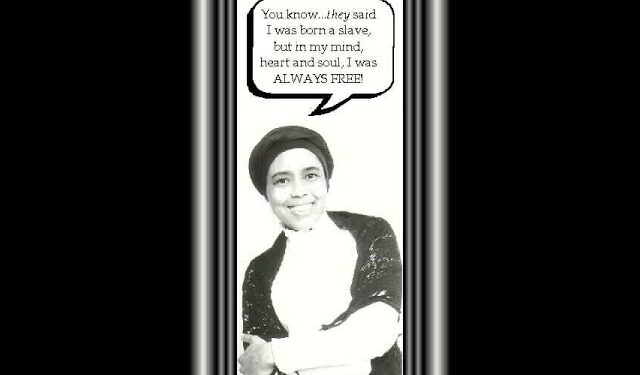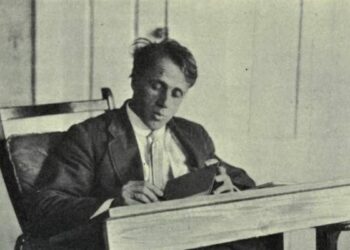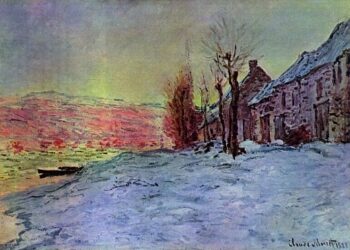Table of Contents
ToggleIntroduction
An Ante-Bellum Sermon Summary By Paul Laurence Dunbar Paul Laurence Dunbar (1872-1906) was a pioneering African American poet, novelist, and playwright who is widely regarded for his mastery of both dialect and standard English in his works. Dunbar’s work spans themes of race, identity, social justice, and the lived experience of Black people in America during the late 19th and early 20th centuries. One of his most powerful and thought-provoking poems, “An Ante-Bellum Sermon,” illustrates his ability to merge the cultural experience of African Americans with the larger historical and political context of his time.
In “An Ante-Bellum Sermon,” Dunbar explores themes of slavery, faith, and resilience. The title itself points to a period before the Civil War—“ante-bellum”—and implies that the poem will speak to the experiences of African Americans in the pre-Civil War South. Through a poignant mix of humor, irony, and social commentary, Dunbar crafts a sermon that critiques the condition of Black people in the antebellum period while offering a reflection on the nature of their endurance.
Summary of “An Ante-Bellum Sermon”
“An Ante-Bellum Sermon” is a dramatic monologue that takes the form of a preacher’s sermon. However, the sermon is not what one might expect in a conventional sense. Rather than a typical spiritual message, the preacher delivers a sermon that humorously and cynically reflects on the struggles of enslaved African Americans and their ability to endure hardship through faith.An Ante-Bellum Sermon Summary By Paul Laurence Dunbar

In the poem, the preacher stands before an imagined congregation of enslaved Black people, and his words speak directly to their experiences. He begins by describing the harsh and degrading conditions of slavery but quickly turns the conversation to the theme of salvation. The preacher suggests that despite the suffering endured in this life, the ultimate goal is eternal salvation in the next. This promise of freedom in the afterlife is a powerful coping mechanism for the enslaved, allowing them to withstand the indignities and brutality they face daily.An Ante-Bellum Sermon Summary By Paul Laurence Dunbar
Read more
The sermon, however, contains an underlying irony. While it is structured like a traditional Christian sermon, the preacher’s rhetoric subtly critiques the system of slavery and the hypocrisy of the enslavers. The preacher acknowledges the suffering and oppression of the enslaved, but his focus is on the spiritual redemption that they can look forward to in heaven. Through this, Dunbar reveals both the deep faith that sustained Black people during slavery and the contradictions within the institution that used Christianity to justify the enslavement of human beings.
The poem ends on a note of reflection, emphasizing the complex role of religion in the lives of enslaved people. The faith that provided comfort and a sense of hope also served as a tool for maintaining the status quo. Yet, the poem also hints at the deep strength and resilience of the enslaved people, who, despite the manipulation of their faith, continue to survive and endure.An Ante-Bellum Sermon Summary By Paul Laurence Dunbar
Themes of “An Ante-Bellum Sermon”
- Slavery and Oppression: The most prominent theme in “An Ante-Bellum Sermon” is slavery and the intense suffering it inflicted upon African Americans. Through the preacher’s words, the poem acknowledges the brutal conditions of enslavement, highlighting the physical, emotional, and psychological toll that slavery took on Black people. The irony in the sermon lies in the fact that the preacher encourages the enslaved people to focus on the promise of heaven while they endure suffering, which points to the ways in which slavery dehumanized and limited the potential of African Americans.
- Faith and Religion: Religion plays a central role in the lives of enslaved people, and “An Ante-Bellum Sermon” reflects the complex relationship that Black people had with Christianity. On one hand, the promise of salvation through faith allowed many to endure the suffering of slavery. The Christian faith, which was often used by slaveowners as a tool to maintain control, also provided a sense of hope for the enslaved. Yet, Dunbar’s poem also critiques the way that faith was manipulated by the institution of slavery, presenting the irony of a religion that was used to justify the suffering of millions.
- Hope and Endurance: Another key theme is the enduring hope that sustained enslaved people. The preacher, through his sermon, emphasizes the importance of holding on to the promise of eternal freedom in heaven, which serves as a form of emotional and psychological endurance for those who live under the brutal conditions of slavery. This hope, though rooted in a Christian vision of the afterlife, became a means for the enslaved to cope with their daily reality.
- Irony and Hypocrisy: Dunbar uses irony to expose the contradictions within the institution of slavery and the role of Christianity in justifying it. The preacher’s focus on salvation in the afterlife, while the enslaved people suffer in the present, highlights the disconnection between religious promises and the reality of life for African Americans. The poem reveals the hypocrisy of a system that preaches love and brotherhood while simultaneously engaging in violence and oppression. The sermon becomes a critique of a faith that is manipulated to serve the interests of the powerful.
- Cultural Resilience: Despite the harsh conditions of slavery, “An Ante-Bellum Sermon” conveys a sense of cultural resilience among African Americans. Even though their faith was exploited and their bodies were enslaved, the strength of the Black community endured. Dunbar’s poem captures this resilience, showing that while religion offered comfort, it was ultimately the spirit and collective strength of the enslaved people that allowed them to survive. This theme of resilience is central to understanding the emotional and cultural survival of African Americans during the antebellum period.
Read more
“An Ante-Bellum Sermon”
Dunbar’s choice of form for “An Ante-Bellum Sermon” is significant in its own right. The poem takes the shape of a sermon, a staple of Christian worship, particularly in the Black church. By adopting the form of a sermon, Dunbar places himself within a long tradition of African American oral culture. The preacher, as a central figure in African American life, is a powerful symbol of both faith and resistance. Through the use of this form, Dunbar is able to communicate both the spiritual and social dimensions of the African American experience.An Ante-Bellum Sermon Summary By Paul Laurence Dunbar
The language used in the poem combines standard English with dialect, a feature characteristic of much of Dunbar’s work. The preacher’s words reflect the vernacular of enslaved people, adding authenticity and immediacy to the poem. The use of dialect helps capture the cultural and social reality of the time, grounding the poem in the lived experience of African Americans.An Ante-Bellum Sermon Summary By Paul Laurence Dunbar
The irony of the poem is heightened by the contrast between the preacher’s solemn tone and the underlying critique of the system of slavery. The structure of the sermon, with its cadence and rhythm, is familiar, yet the content subverts the expectation of a purely religious message. The preacher’s words become a vehicle for both faith and critique, serving to expose the contradictions inherent in a system that justified enslavement with Christian teachings.An Ante-Bellum Sermon Summary By Paul Laurence Dunbar

Conclusion
Paul Laurence Dunbar’s “An Ante-Bellum Sermon” offers a compelling and ironic reflection on the intersection of slavery, religion, and endurance in the African American experience. Through the figure of the preacher, Dunbar explores the way that religion served both as a source of hope and a tool of control for enslaved people.An Ante-Bellum Sermon Summary By Paul Laurence Dunbar
The poem critiques the hypocrisy of a system that used Christianity to justify the oppression of Black people while also celebrating the resilience and strength of those who endured it. In doing so, Dunbar provides a nuanced, multifaceted exploration of faith, suffering, and resistance that resonates with the historical context of his time and continues to offer insights into the complexities of American identity and social justice.An Ante-Bellum Sermon Summary By Paul Laurence Dunbar
Read more
1. What is the significance of the title “An Ante-Bellum Sermon”?
The title “An Ante-Bellum Sermon” points to the time period before the Civil War (antebellum) when slavery was still legal in the southern United States. The poem takes the form of a sermon delivered by an enslaved preacher, using religious language to address the conditions of slavery. The title prepares the reader for a reflection on the religious experience of enslaved African Americans in the pre-Civil War South.
2. How does the poem critique religion?
While religion provided comfort and hope to enslaved people, “An Ante-Bellum Sermon” critiques the way Christianity was manipulated by slaveowners to justify and maintain the institution of slavery. The preacher in the poem focuses on salvation in the afterlife, which offers solace to the suffering enslaved, but the poem reveals the irony of using religion to justify oppression and deny people their freedom.
3. What role does irony play in the poem?
Irony is a central device in “An Ante-Bellum Sermon.” The preacher’s words emphasize the suffering of enslaved people, but he focuses on the afterlife as a form of escape. This creates an ironic tension, as the religious promise of salvation is offered in the context of extreme suffering. The poem exposes the hypocrisy of a system that preaches Christian love while perpetuating slavery.
4. Why is the form of a sermon significant in this poem?
The form of a sermon is significant because it reflects the role that religion played in the lives of enslaved people. In the Black church, the sermon was a place of spiritual solace, but it was also a space where Black people could find a sense of community and collective identity. Dunbar uses the sermon form to reflect both the religious and social aspects of the Black experience, giving voice to the resilience and faith of African Americans.
5. How does Dunbar use dialect in this poem?
Dunbar incorporates dialect into the preacher’s speech, using the vernacular of the enslaved people to capture the cultural and social reality of the time. This use of dialect helps ground the poem in the lived experience of African Americans during the antebellum period and adds authenticity to the preacher’s voice. It also serves to highlight the divide between the formal language of the sermon and the lived reality of slavery.
6. What does the poem say about hope and endurance?
The poem suggests that, despite the hardships of slavery, hope and endurance were central to the survival of enslaved African Americans. Through faith, particularly the promise of salvation in the afterlife, the enslaved found strength to endure their suffering. However, the poem also hints at the exploitation of this hope, revealing that it was used to pacify and control the enslaved, even as it provided them with a sense of purpose.
Related
How did the Civil War affect American literatureIn "English Literature"
Novel Dances With Wolves Summary By Michael BlakeIn "Novel"
MCQs on William DunbarIn "English Literature"

















